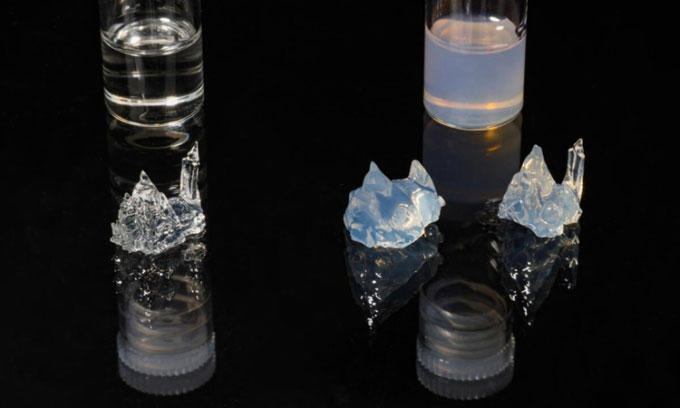New 3D printing technique is 30 times faster than traditional methods
Light-based 3D printing is capable of creating small objects in tens of seconds with high resolution.
A team at the Federal Institute of Technology Lausanne (EPFL) has developed a light-based 3D printing technique about 30 times faster than traditional 3D printing that can fabricate objects in 20 seconds instead of 10 minutes. as usual. The new study was published in the journal Advanced Science on May 18.

EPFL's light-based 3D printing is fast and can be done with opaque plastics. (Photo: EPFL)
Conventional 3D printing involves laying layers of material on a substrate and letting it harden. However, EPFL's method takes a completely different approach, much faster.
"We pour the resin into a container and spin it. We then shine the light on the barrel at different angles, causing the resin to harden in places where the energy accumulated in the resin exceeds a certain level. This method gives high accuracy and can produce objects with a resolution similar to current 3D printing techniques," said Christophe Moser, professor at EPFL's Laboratory of Applied Photonic Devices.
Making the object this way is incredibly fast, the team says, taking only tens of seconds instead of minutes. Another advantage is that it is possible to print shapes with complex hollows without the need for additional support structures as with flatbed printers.
Previously, the problem with light-based 3D printing was that only transparent plastics could be used because anything that contained a hint of color, such as the opaque plastic used in biomedical artificial arteries, would bends and distorts light as it passes through, causing a sharp drop in resolution and unflattering printed objects.
In the new study, Moser and colleagues developed a technique that allows the use of opaque plastics. The team of experts fitted a rear video camera to calculate the light's path through the plastic. After analyzing the light that passed through, they created a distortion correction algorithm and input printed instructions when the machine was operating, helping to distribute the correct amount of energy to each point.
Printing of opaque plastic objects is still very fast. The team printed a miniature model of Yoda (a character from the "Star Wars" series) in just about 20 seconds. The product also has the same resolution as transparent plastic, about 1/10 mm. The team is working to increase the resolution by 100 times, aiming to achieve micrometer-level accuracy.
- Ultrasound dryers help clothes dry up to 2 times faster
- Atoms are 7 times smaller than we have ever known
- Non-destructive fingerprint collection techniques
- By super-fast laser, glass can be welded to aluminum, steel or titanium!
- Growing vegetables without soil
- Israel develops meat products with 3D printing technology
- Build your house using 3D printing technology without using brick
- IBM developed transistors 100 times faster
- Cure burns by traditional methods
- Detects big security flaws in 3D printing technology
- For the first time producing drugs using 3D printing technology in just 7 seconds
- Technological wonder: The world only 1 company can make this device, China and the US are also 'hands-on'
 The US company is about to build a supersonic passenger plane of 6,000km / h
The US company is about to build a supersonic passenger plane of 6,000km / h Japan develops avatar robot as in fiction film
Japan develops avatar robot as in fiction film Australia tested the world's first mango picking robot
Australia tested the world's first mango picking robot America develops technology to separate water from animal waste
America develops technology to separate water from animal waste 9 billion light years away, 'space hole' facing Earthlings
9 billion light years away, 'space hole' facing Earthlings  Simulating Einstein's formula, scientists prove that light can create matter
Simulating Einstein's formula, scientists prove that light can create matter  How do animals see the world?
How do animals see the world?  How do real life invisibility cloaks work?
How do real life invisibility cloaks work?  Double quasars travel through 10 billion years to Earth, about to merge into a monster
Double quasars travel through 10 billion years to Earth, about to merge into a monster  What happens after humans travel faster than the speed of light?
What happens after humans travel faster than the speed of light? 